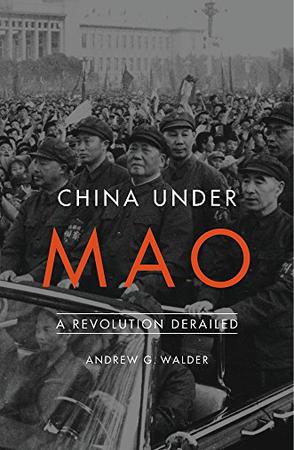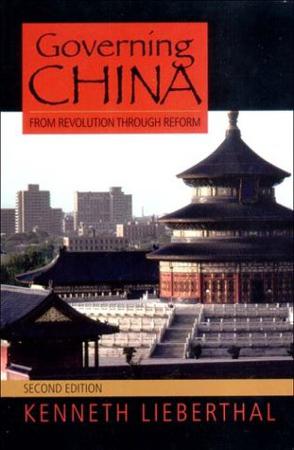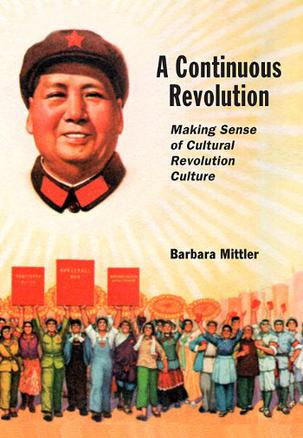-

China Under Mao
China’s Communist Party seized power in 1949 after a long period of guerrilla insurgency followed by full-scale war, but the Chinese revolution was just beginning. China Under Mao narrates the rise and fall of the Maoist revolutionary state from 1949 to 1976—an epoch of startling accomplishments and disastrous failures, steered by many forces but dominated above all by Mao Zedong. Mao’s China, Andrew Walder argues, was defined by two distinctive institutions established during the first decade of Communist Party rule: a Party apparatus that exercised firm (sometimes harsh) discipline over its members and cadres; and a socialist economy modeled after the Soviet Union. Although a large national bureaucracy had oversight of this authoritarian system, Mao intervened strongly at every turn. The doctrines and political organization that produced Mao’s greatest achievements—victory in the civil war, the creation of China’s first unified modern state, a historic transformation of urban and rural life—also generated his worst failures: the industrial depression and rural famine of the Great Leap Forward and the violent destruction and stagnation of the Cultural Revolution. Misdiagnosing China’s problems as capitalist restoration and prescribing continuing class struggle against imaginary enemies as the solution, Mao ruined much of what he had built and created no viable alternative. At the time of his death, he left China backward and deeply divided. -

中国是怎样从“文革”走向改革的
本书由“二十世纪六十年代的世界与中国”“体制病,运动治———观察社教运动的一个角度兼及‘文革’的体制基因”“‘文化大革命’为什么会发生”“中国是怎样从‘文革’走向改革的———中国改革的起点与路径选择”等十八个与“文革”有关的主题,组成了一个有着严密内在联系的整体,向读者展示了“文革”是怎样开始,又是如何走向结束的整个过程,以及这一过程中发生的一幕幕“场景”。 -

Xinjiang
Eastern Turkestan, now known as Xinjiang or the New Territory, makes up a sixth of China's land mass. Absorbed by the Qing in the 1880s and reconquered by Mao in 1949, this Turkic-Muslim region of China's remote northwest borders on formerly Soviet Central Asia, Afghanistan, Kashmir, Mongolia, and Tibet, Will Xinjiang participate in China's twenty-first century ascendancy, or will nascent Islamic radicalism in Xinjiang expand the orbit of instability in a dangerous part of the world? This comprehensive survey of contemporary Xinjiang is the result of a major collaborative research project begun in 1998. The authors have combined their fieldwork experience, linguistic skills, and disciplinary expertise to assemble the first multifacted introduction to Xinjiang. The volume surveys the region's geography; its history of military and political subjugation to China; economic, social, and commercial conditions; demography, public health, and ecology; and patterns of adaption, resistance, opposiiton, and evolving identities. -

Governing China
Governing China: From Revolution to Reform , the leading text for courses on Chinese politics has been thoroughly revised and updated. The new Second Edition includes discussions of: The consumer revolution that has brought China’s major urban areas to the forefront of the developed world and created a new middle class An expanding private sector that has become the major generator of new employment in the overall economy as the state sector has shed jobs The increase in foreign direct investment which has set China on track to becoming the manufacturing center of the world. An enormous population migration from rural to urban areas and from the interior to the coast that is becoming one of the most massive movements of people in human history, and its significant impact on the environment The unprecedented integration into the international economic system as China has joined virtually every major multilateral regime The reactions of the top and the bottom of the political system to these recent developments and the continuing struggles between the government’s large bureaucratic structures and sporadic popular political movements. -

A Continuous Revolution
Mittler's groundbreaking study assesses Cultural Revolution arts--music, drama, opera, painting, comics, and literature--as more than propaganda, demonstrating that they were paradigm-shifting works that left indelible impacts on China's artistic culture...Magisterial in scope, this book proves that art of the Cultural Revolution period was not an aberration but rather the most complete expression of trends that had begun in the early 20th century, when yearnings for a great hero first entered popular discourse. As the apotheosis of mass culture, the Cultural Revolution produced truly popular art that spoke to uneducated farmers and urbane intellectuals alike and was experienced in multiple ways that belie claims of hegemony. Accompanied by a website that includes further text, images, music, and video clips, this will serve as the definitive study of its genre for years to come. (N. E. Barnes Choice 2013-07-01) -

中國,從天下到民族國家
中國的多民族統一國家思想的根源,可以追溯到中國人(包括之後接受中國文化思想的人們)對世界的原初認識,追溯到在這種認識之上的人類與自然神靈之間建立的契約關係,以及為了遵守這種契約關係而形成的關於人與人之間、個人•共同體•社會•國家四者之間、文化與政治之間、權威與權力之間 、民族屬性與文化屬性之間關係的認識。只有在這一宏觀認識的基礎上,才能夠正確掌握中國多民族統一國家的歷史脈絡,理解中國多民族統一國家思想在各個時代的發展演變,理解各時代的民族關係和各個政權處理民族問題政策的得失,並進而思考近代民族問題發生的原因,找到解構近代民族問題的鑰匙。